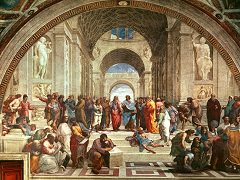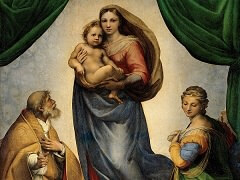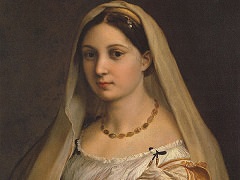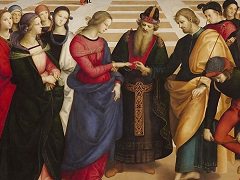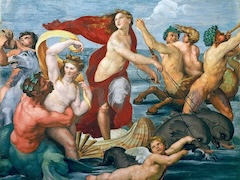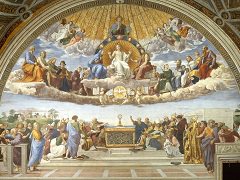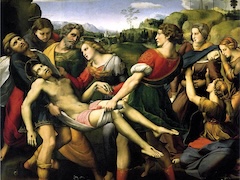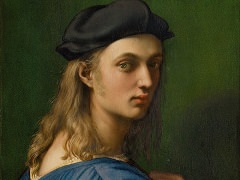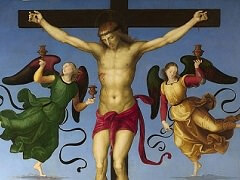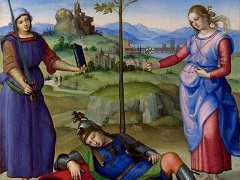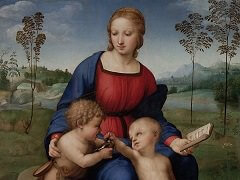The Madonna of Foligno - by Raphael
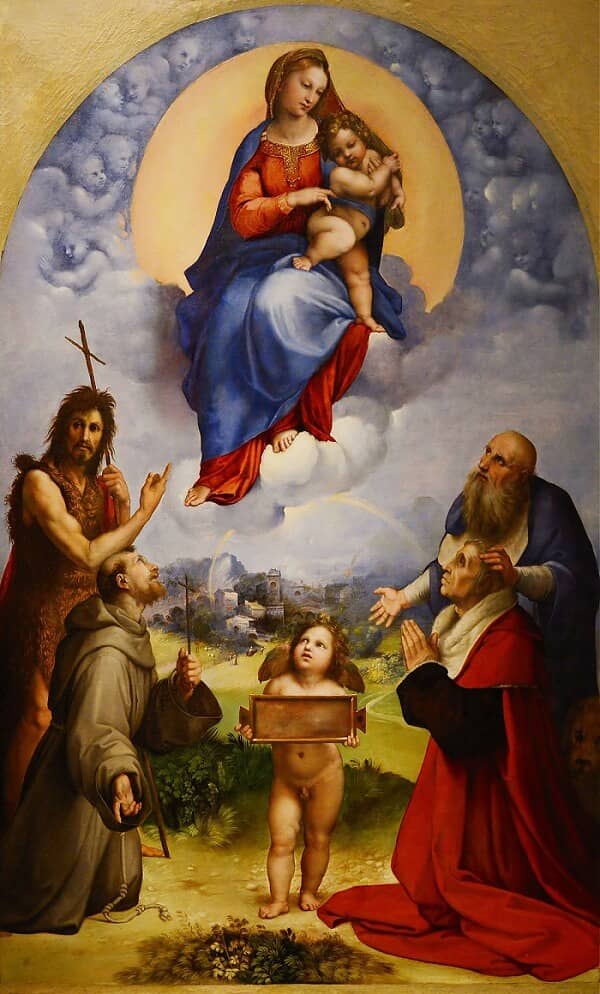
The Madonna of Foligno is named after its later home, the monastery of St. Anna delle Contesse in Foligno, the native town of the donor, Sigismondo de' Conti (1432-1512). De' Conti had commissioned the work for the high altar of the Franciscan church of Santa Maria in Aracoeli in Rome, which had originally been built to commemorate the appearance of the Blessed Virgin to the Roman emperor Augustus in a vision. Raphael's picture takes up this theme but shows the donor, accompanied by John the Baptist, St. Francis, and St. Jerome, in place of Emperor Augustus. The close connection between the donor group and the Virgin is underlined by the harmony in the color of their garments. The work is distinctive for its emotional power, a typical feature of Raphael's mature style, giving expression to the inner turmoil of the figures. The heavenly and earthly zones are no longer as clearly delineated as they were in the Pala Oddi.
In the background, the vision of the Virgin Mary gives way to a dramatic stormy sky. This alludes to a severe storm over Foligno during which De' Conti's country seat survived a lightning strike thanks, it was claimed, to the intervention of the Madonna. This would also allow the painting to be seen as a votive picture. De' Conti died in 1512 shortly before the completion of the work, which is not thought to have been placed on the high altar of Santa Maria in Aracoeli until a year after the donor's burial in the church.

